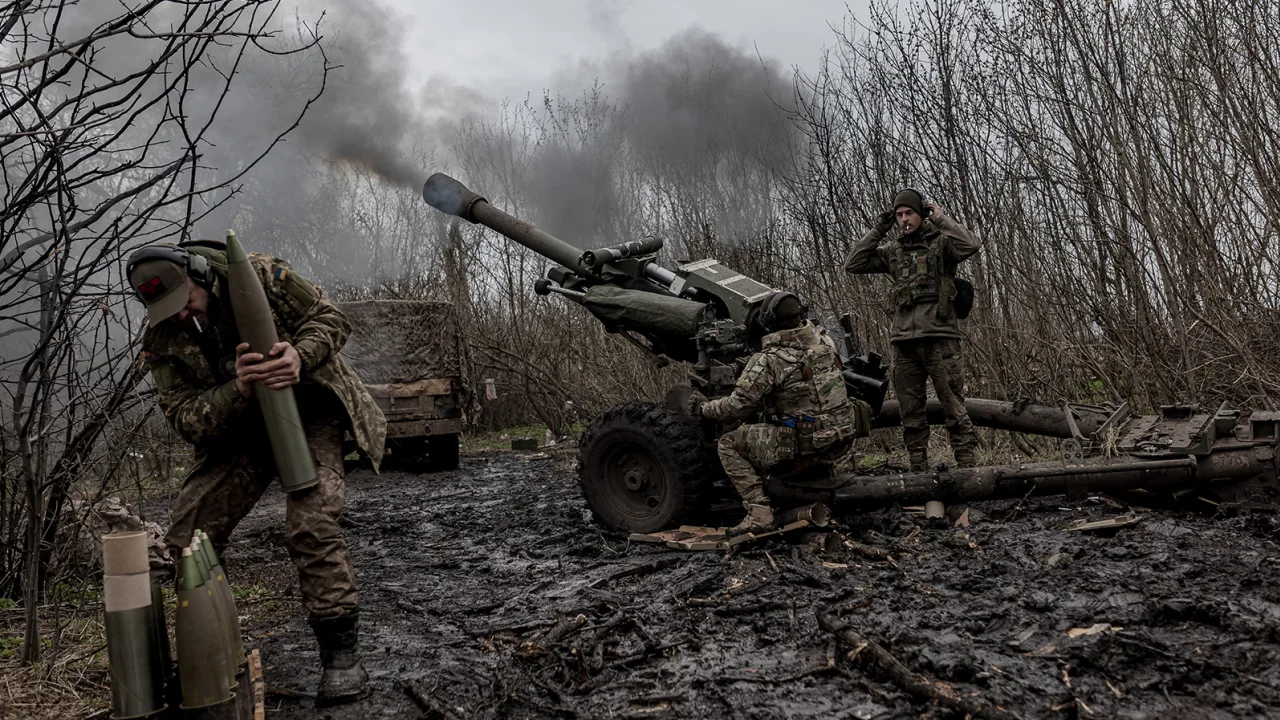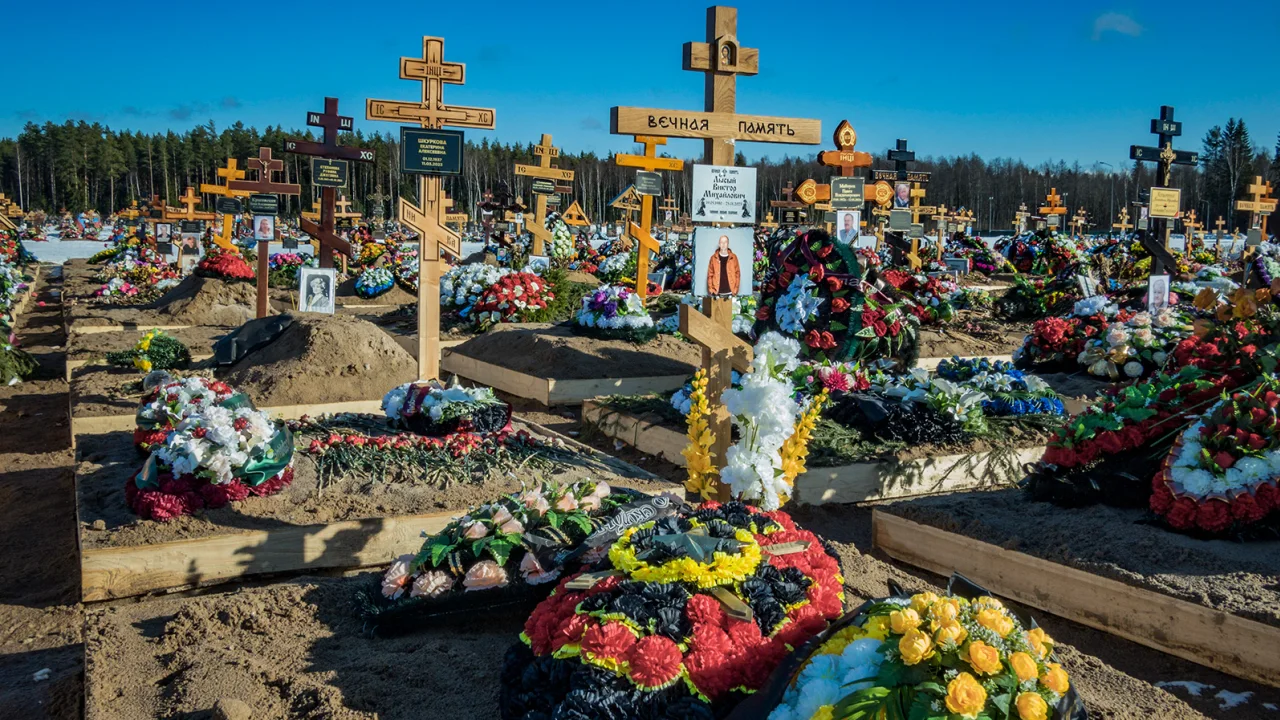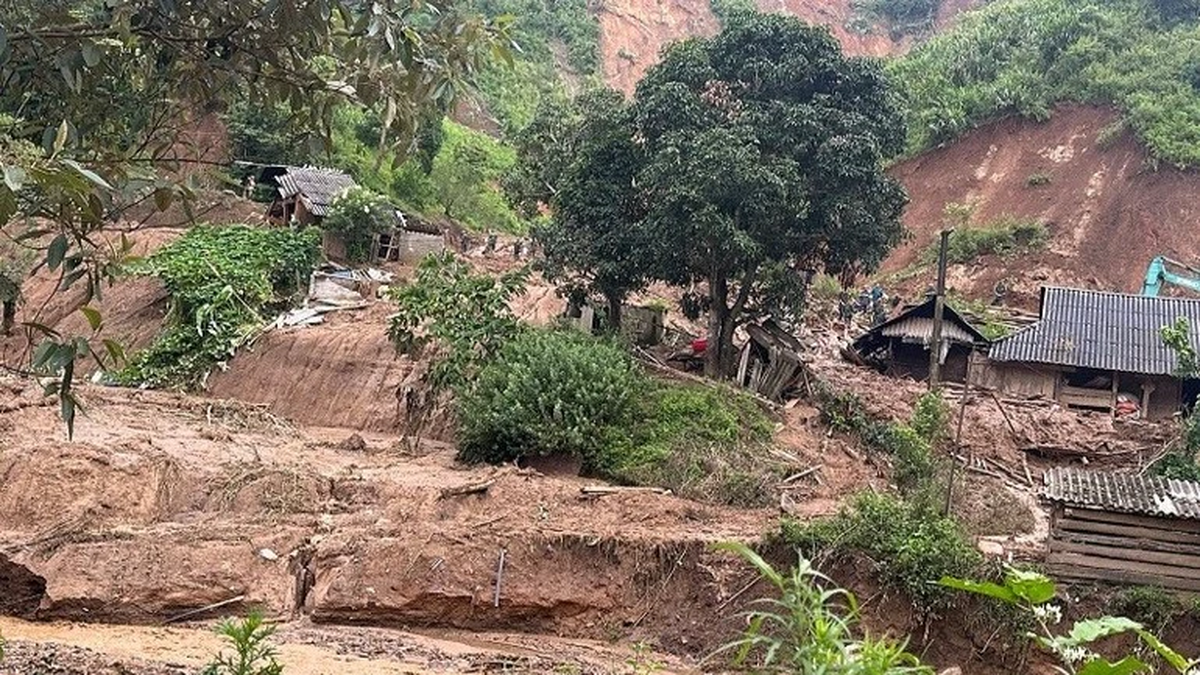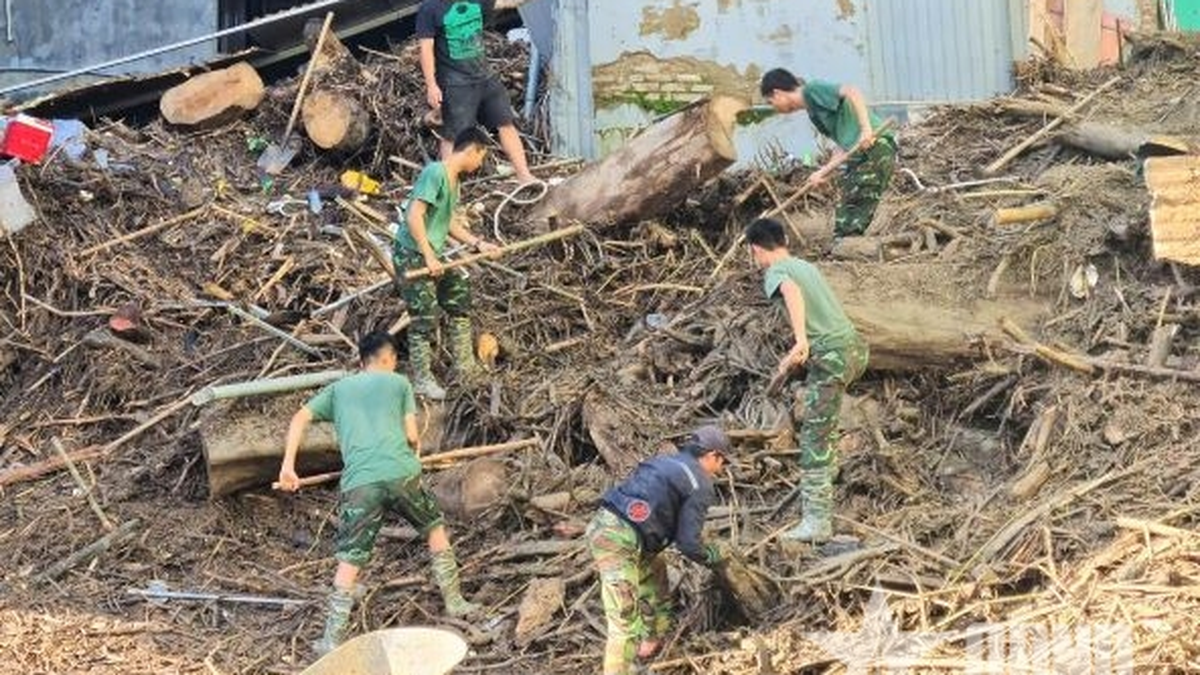Some of the documents, which US officials say are authentic, could shed light on the scale of surveillance of US strategic allies, including South Korea, Israel and Ukraine.
Other documents reveal the extent to which the US has penetrated the Russian Ministry of Defense and the Wagner mercenary organization, largely through disrupting communications and human sources that may now be abandoned or at risk.
In addition, many documents also revealed important weaknesses in Ukraine's weapons, air defenses, battalion size, and readiness at the height of the war, when Ukrainian military forces were preparing for a counterattack against Russia and when the United States and Ukraine had just begun to develop a trusting bilateral relationship through intelligence sharing.
According to a source close to Ukrainian President Volodymyr Zelensky, the country has begun to change some military plans due to the leak.

Soldiers of the Da Vinci Wolves Battalion prepare to fire anti-aircraft artillery towards Bakhmut on April 3, 2023. Photo: Diego Herrera Carcedo/Anadolu Agency/Getty Images.
The Pentagon has established an “interagency plan” to assess the severity of the leak, Pentagon Deputy Press Secretary Sabrina Singh said Sunday.
“The Department of Defense continues to review and assess the credibility of the screenshots posted on social media sites, which may contain sensitive, classified information,” Singh said in a statement. “An interagency plan has been established to focus on the seriousness of the threat posed by the screenshots to the national security of the United States and to our allies and partners.”
Ms Singh added that US officials had contacted allies and partners over the weekend about the leak and had reported it to “relevant congressional committees”.
The leak has also prompted the Pentagon to begin taking steps to tighten access to sensitive documents, which were previously accessible to hundreds of people in the U.S. government at any given time, according to several U.S. officials.
The Joint Chiefs of Staff, a body of top military officials who advise the president, is examining its distribution list to determine who was given the documents, according to a Defense Department official. Many of the documents are marked as having been prepared by the Joint Chiefs’ intelligence arm, known as J2, and appear to be briefings.
On Friday, Ms Singh said the ministry was continuing to monitor the matter and had been in contact with the Ministry of Justice, which confirmed it had launched an investigation into the source of the leak.
The anger of diplomats
According to screenshots of posts reviewed by CNN, the leaked documents appeared on the Discord platform over the past month. The posts show crumpled documents laid out on newspaper and surrounded by random items like zip-top bags and bottles of glue. According to a source familiar with the type of material, it appears the documents were hastily folded and stuffed into bags before being taken out of a secure area.
A Discord spokesperson confirmed Sunday that the company is cooperating with law enforcement in the investigation.
Although espionage activities are an inevitable part of the US intelligence community's collection of information around the world, many diplomats from countries mentioned in the documents said they were angry that the information had become public and worried about the US's reputation.
US allies are also conducting damage assessments, looking into whether their intelligence sources and methods were compromised by the leak.
“We expect the US to share its assessment in the coming days, but we cannot wait for their assessment,” said an official from a country in the Five Eyes alliance, an intelligence-sharing alliance that includes Australia, Canada, New Zealand, the UK and the US. “We are currently conducting our own internal assessments. We are examining this material closely to see if the intelligence originated from our country.”
An official from another country in the Alliance has expressed concern that leaks about the war in Ukraine could harm that country on the battlefield.
The official also pointed out the alarming detail that a document from February 2023 titled “Russia-Ukraine: War in Donbas likely to remain stalemated throughout 2023” had been seen, which mentioned difficulties in assessing “Ukraine’s ability to sustain operations.”
“Wins for Ukraine will be hard to come by, but an internal US document assessing the possibility of a yearlong stalemate does not help efforts to achieve this goal,” the official said.
Follow allies
CNN examined 53 leaked documents, all of which appear to have been compiled between mid-February and early March.
A document says the US spied on President Zelensky. This is not surprising, but Ukrainian officials are furious about the leak, according to a source close to President Zelensky.
This US intelligence report shows that, last February, President Zelensky “proposed attacking Russian military deployment sites in Rostov Oblast” with drones, because Ukraine did not have long-range weapons capable of attacking these sites.
Signals intelligence includes the disruption of communications and is defined by the US National Security Agency as “intelligence derived from signals and electronic systems used by foreign entities such as communications systems, radars, and weapons systems.”
This intelligence could explain US comments about reluctance to provide long-range missile systems to Ukraine because of concerns that Kyiv would use them to strike inside Russia. But Ukraine has pledged not to use the weapons the US provides for this purpose.
Also related, another intelligence report said that Russia could use Ukraine’s attacks on targets deep inside Russia “as an opportunity to denounce NATO as an aggressor and possibly increase aid to Russia if it judges the attacks to be serious enough.”
Mykhailo Podolyak, an adviser to the Head of the Office of the President of Ukraine, said on his Telegram channel on Friday that he believed the circulated documents were inaccurate, “not related to Ukraine’s real plans” and based on “a large amount of false information” spread by Russia.
Another document describes in great detail a conversation between two senior South Korean national security officials about concerns from the country's National Security Council about requests for ammunition from the United States.
These officials were concerned that the ammunition that the US would send to Ukraine would violate South Korea’s policy of not providing military aid to countries at war. According to the document, one of the officials suggested a way around the policy without changing it: they could sell the ammunition to Poland.
The document has sparked controversy in Seoul, and South Korean officials have told reporters they will ask Washington to address the issue, according to the New York Times.
Many diplomats said that officials from other countries also plan to ask Washington to propose a solution but have not mentioned this issue, because they want to wait to see what the Biden administration will say about the leaked documents.

Israelis protest against Prime Minister Benjamin Netanyahu's judicial reform plan during a demonstration in Tel Aviv on March 26, 2023. Photo: Ohad Zwigenberg/AP.
Meanwhile, an intelligence report on Israel has sparked outrage in Jerusalem. The report, written by the CIA and based on signals intelligence, said that Israel's main intelligence agency, the Mossad, had encouraged protests against the country's new government.
The Israeli Prime Minister's Office responded on behalf of the Mossad on Sunday morning, calling the report "false and completely baseless."
“The Mossad and its senior officials have not encouraged its employees to participate in anti-government protests, political demonstrations or any other political activities,” the statement said. “The Mossad and its senior officials have no involvement in the protests. Dedication to the values of national service has been the guiding principle of the Mossad since its inception.”
Another secret file, also sourced from signals intelligence, provides insight into how the United States assesses allied policies and how it uses its influence to change those policies.
The document, titled “Israel: A Window to Providing Military Aid to Ukraine,” said Jerusalem “would likely consider military aid if it came under pressure from the United States or felt a deterioration” in its relationship with Russia.
Another document reveals US assessments of several European countries' intentions to provide fighter jets to Ukraine, after the country has been requesting the aircraft for more than a year.
On February 23, the report said, Bulgaria had expressed its willingness to provide Ukraine with a MiG-29 squadron. The report called the decision “a challenge,” as it would leave Bulgaria without a fighter jet squadron for air patrol missions until the arrival of US F-16s, “at least another year.”
Spy on the enemy
The massive leak also revealed that US penetration of the Russian Ministry of Defense and the Wagner mercenary organization was deeper than previously thought.
Much of the information on Russia is gathered from communications intercepts, raising concerns that Russia may change its communication methods to better conceal its plans.
Human sources may also be at risk. Maps of Russian military movements and capabilities in the leaked documents were partly sourced from confidential human sources, leading to concerns among U.S. officials that these individuals could be at risk.
The documents show that the US was able to grasp Russia's attack plan, so detailed that it knew exactly which thermal power plant, which transformer station, which railway or road bridge the Russian forces planned to attack, and even the timing of the attack when the country invaded Ukraine.
The US also learned about Russia’s strategies for confronting NATO tanks when it invaded Ukraine in April. According to US intelligence reports, the plan “requires the establishment of three attack zones based on distance – long range, medium range and short range – with each zone being conducted by a different type of weapon and unit.”
The documents underscore US concerns about the Wagner group, which has thousands of members operating in Ukraine.
The document also provides casualty figures for both sides, figures that are extremely difficult to estimate accurately and that the United States has long been reluctant to make public.

Graves of some members of the Wagner mercenary organization who died during the special operation at the Belootrovsky cemetery on the outskirts of St. Petersburg. Photo: Celestino Arce/NurPhoto/Getty Images.
According to one of the documents, Russian forces suffered between 195,500 and 223,000 casualties as of February, including up to 43,000 battlefield deaths. Meanwhile, Ukraine suffered between 124,500 and 131,000 casualties and up to 17,500 battlefield deaths.
Malicious actors have already begun exploiting the leaked documents to spread disinformation, analysts say. For example, documents on casualty figures were modified in recent weeks to halve the number of Russian casualties before being circulated on pro-Russian Telegram channels.
Asked about the images circulated on Twitter and Telegram, Kremlin spokesman Dmitry Peskov said on Friday that “we have no doubt that the United States and NATO are involved in the Russia-Ukraine conflict, either directly or indirectly.”
“The level of involvement is increasing. We are monitoring this process. Of course it will complicate the situation but it will not change the final outcome of this particular operation,” he said.
Nguyen Quang Minh (According to CNN)
Source



































































































Comment (0)